1. Peacock Spider: The Dancing Arachnid
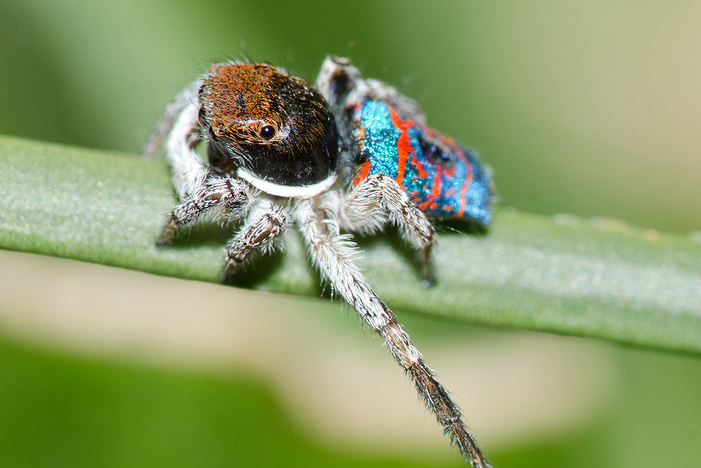
Flickr
Peacock spiders (Maratus) are tiny jumping spiders, often no larger than a grain of rice, yet they captivate scientists and nature enthusiasts alike with their vivid colors and mesmerizing courtship rituals. Native to Australia, male peacock spiders unfurl iridescent, rainbow-colored abdominal flaps during mating displays, performing intricate dances to attract females. These performances involve precise leg movements, rhythmic vibrations, and dramatic poses, showcasing a complex interplay of visual and vibrational signals. Their vibrant coloration and elaborate behaviors have made them a focal point in the study of sexual selection. Researchers are particularly intrigued by how such traits evolve and what they reveal about the role of beauty and communication in natural selection. Peacock spiders not only highlight the wonders of evolutionary diversity but also demonstrate the extraordinary adaptations that can arise from competition for mates.
2. Mantis Shrimp: The Underwater Powerhouse

Wikimedia Commons
Mantis shrimp (Stomatopoda) are remarkable marine crustaceans renowned for their incredible strength and extraordinary vision. Though small, their club-like appendages strike with such force that they can break aquarium glass and pulverize the shells of prey. These strikes occur at speeds comparable to a bullet, generating cavitation bubbles that create secondary shockwaves—an astonishing feat of natural engineering. Beyond their physical prowess, mantis shrimp have some of the most advanced eyes in the animal kingdom. They possess 16 types of photoreceptors (humans have only three), enabling them to see ultraviolet, polarized light, and an unparalleled range of colors. Their ability to detect polarized light has inspired breakthroughs in optics and materials science, particularly in creating better cameras and optical devices. The mantis shrimp’s combination of brute strength and optical sophistication makes it a standout example of evolution’s ingenuity, offering scientists insights into both biomechanics and visual systems.
3. Tardigrades: The Immortal Extremophiles
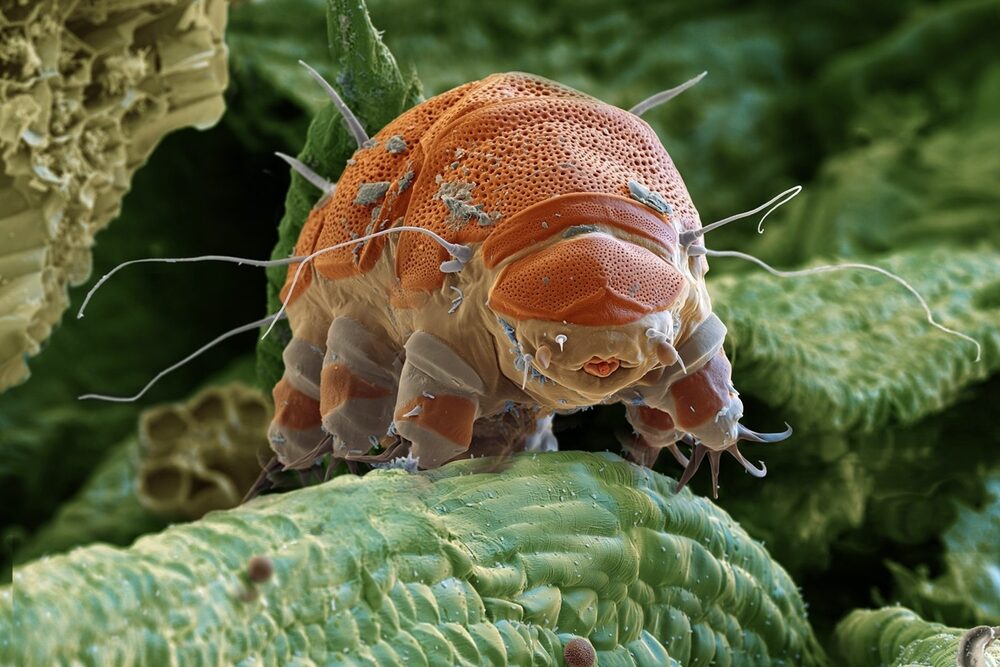
Flickr
Tardigrades, often called water bears, are microscopic creatures famous for their near-indestructible nature. Measuring just 0.5 millimeters in length, they can survive extreme conditions that would annihilate most life forms. These tiny animals endure boiling temperatures, freezing cold, crushing pressures, intense radiation, and even the vacuum of space. Their secret lies in their ability to enter a cryptobiotic state, halting their metabolism entirely and forming a desiccated structure that can be revived when conditions become favorable again. Found in environments as diverse as deep-sea trenches, glaciers, and mossy forests, tardigrades demonstrate unparalleled adaptability. Scientists study these extraordinary creatures to understand the mechanisms of resilience, the limits of biological survival, and the potential for life to exist in harsh extraterrestrial environments. Their astonishing abilities offer a glimpse into the extremes of evolution and provide hope for discovering life beyond Earth.
4. Glass Frogs: Transparent Wonders
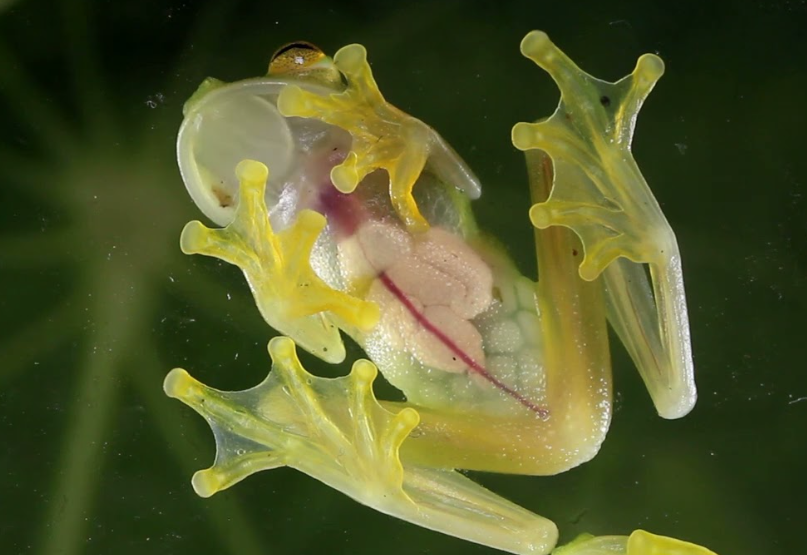
YouTube
Glass frogs (Centrolenidae) are enchanting amphibians named for their semi-translucent skin, which makes their internal organs, including their heart and intestines, visible through their underbellies. Native to the rainforests of Central and South America, these frogs use their transparency as an effective camouflage, blending seamlessly with the leaves they rest on to evade predators. Fascinatingly, recent research reveals that glass frogs can reduce blood flow to their skin while sleeping, making their bodies even less visible by limiting red coloration. This remarkable adaptation offers valuable insights into the evolution of camouflage and the interplay between physiology and survival. In addition to their ecological role in rainforest habitats, their unique vascular biology is of great interest to scientists studying transparency and blood circulation. Glass frogs are living examples of how environmental pressures can shape extraordinary adaptations, revealing new layers of complexity in the natural world.
5. Glass Octopus: The Hidden Marvel
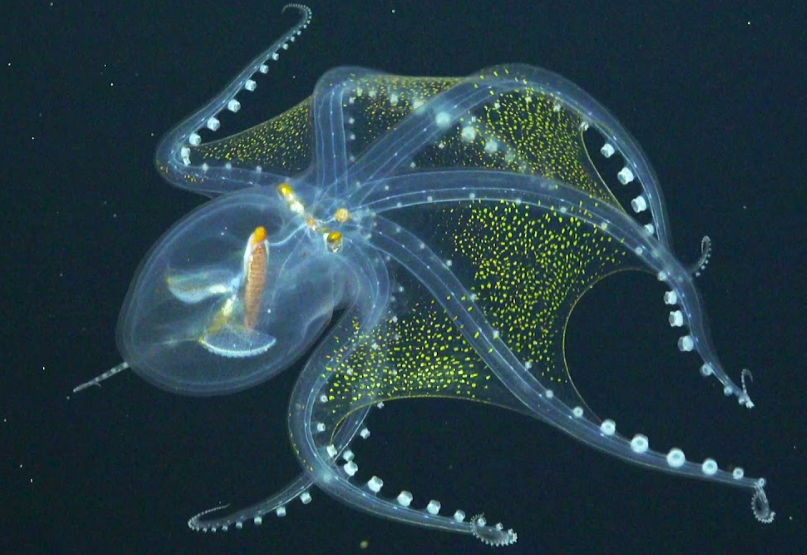
YouTube
Vitreledonella richardi, also known as the glass octopus, is a nearly transparent deep-sea dweller found in tropical and subtropical oceans. This elusive cephalopod has a gelatinous, see-through body that allows it to evade predators in its pitch-dark environment. Its internal organs, such as its digestive gland and optic nerves, are barely visible, making it a master of camouflage. Scientists have only recently begun studying the glass octopus, using deep-sea exploration technologies like remotely operated vehicles. This remarkable transparency provides insights into evolutionary adaptations for survival in extreme marine habitats and helps researchers understand how deep-sea creatures thrive in their enigmatic ecosystems.
6. Shoebill Stork: The Dinosaur Bird

Animalia
The shoebill (Balaeniceps rex) is a striking bird that looks like it stepped out of the distant past, earning it the nickname “the dinosaur bird.” Native to the swamps and wetlands of East Africa, the shoebill is known for its massive, shoe-shaped bill, which it uses to hunt a diverse range of prey, including lungfish, snakes, and even baby crocodiles. This bird’s hunting strategy is deliberate and calculated, often waiting motionless for long periods before striking with lightning speed. Its slow, deliberate movements and intense, almost hypnotic stare give it an air of ancient wisdom, further contributing to its prehistoric appearance. The shoebill’s solitary nature and unconventional hunting techniques challenge typical assumptions about avian behavior and evolution. By studying this unique bird, scientists gain a deeper understanding of how species adapt to their environments, offering valuable insights into the evolutionary pathways that have shaped the diverse world of birds. The shoebill serves as a reminder of the complexity and mystery of avian life.
7. Naked Mole Rat: The Cancer-Resistant Rodent
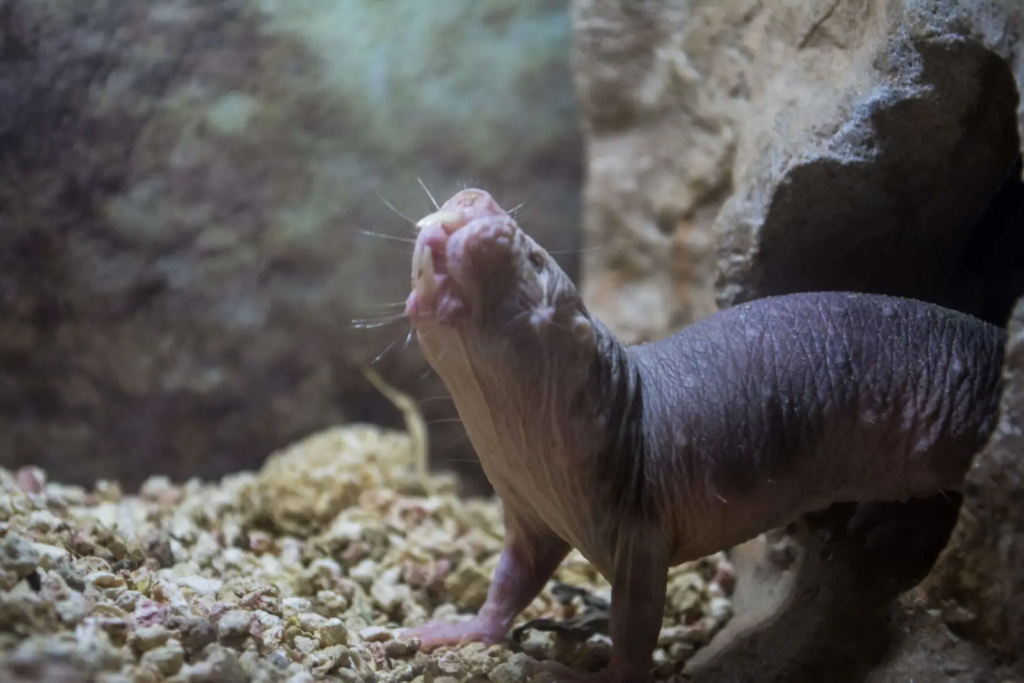
Animalia
Native to East Africa, naked mole rats (Heterocephalus glaber) are fascinating burrowing rodents that challenge the biological norms of aging and disease resistance. Despite their small size, they can live up to 30 years, an extraordinary lifespan for a rodent. What sets them apart even more is their resistance to cancer—naked mole rats are virtually immune to the disease, a trait that has sparked significant interest in cancer research. Their cells exhibit remarkable longevity and resilience, allowing them to live far longer than other rodents. Additionally, naked mole rats have developed the ability to survive in low-oxygen environments by metabolizing fructose instead of glucose, a trait typically seen in plants rather than mammals. This unique adaptation allows them to thrive in the underground tunnels where oxygen levels are minimal. Their exceptional biology is revolutionizing research into aging, cancer resistance, and survival strategies, making them a vital model organism in biomedical studies. The secrets of the naked mole rat’s extraordinary health and longevity may one day offer breakthroughs in human medicine.
8. Kakapo: The Flightless Parrot
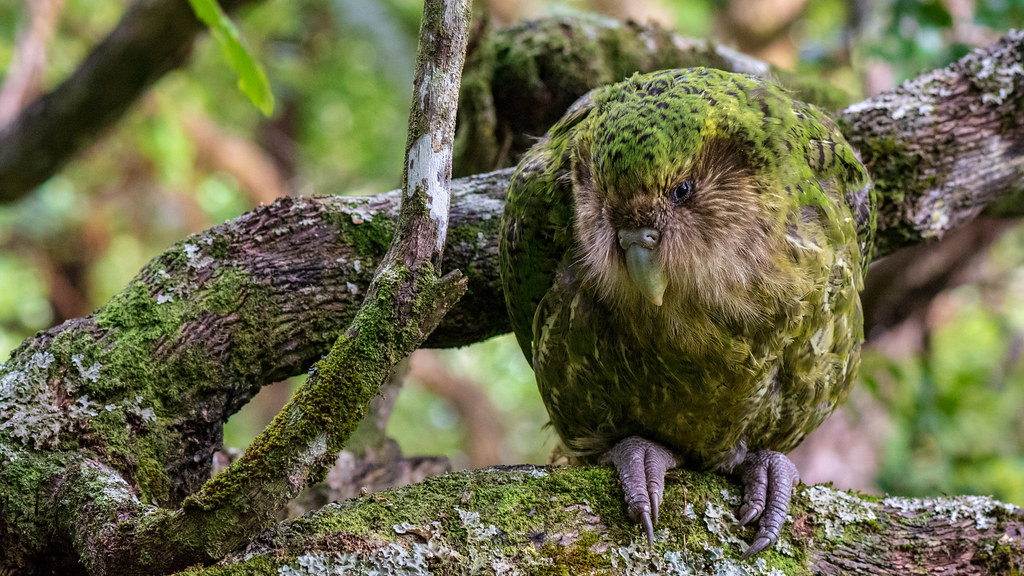
Flickr
The kakapo (Strigops habroptilus) is a critically endangered, nocturnal parrot native to New Zealand, and it’s unlike any other bird in the world. Weighing up to 9 pounds, the kakapo holds the title of the heaviest parrot, as well as one of the longest-lived, with individuals reaching up to 90 years. This flightless bird evolved in an environment with few predators, which allowed it to develop a unique set of traits—such as its heavy body and ground-dwelling nature. Its mating system, known as lekking, is also unusual: males gather in specific areas and call out with booming vocalizations to attract females. Unfortunately, when humans arrived in New Zealand, they brought with them invasive species that devastated the kakapo population. Now, with only around 250 individuals remaining, conservationists are working tirelessly to save this extraordinary bird. The kakapo’s fascinating evolutionary path, shaped by isolation and the absence of predators, makes it a living example of how nature adapts to its environment—while also highlighting the delicate balance between species and ecosystems.
9. Immortal Jellyfish: The Ageless Wonder

YouTube
The immortal jellyfish (Turritopsis dohrnii) is a tiny marine creature capable of reversing its life cycle, making it one of the few known species on Earth that can effectively cheat death. When faced with environmental stress or physical damage, it reverts from its adult medusa stage back to its juvenile polyp stage, restarting its lifecycle. Found in oceans worldwide, this unique adaptation has earned it the nickname “immortal jellyfish.” Researchers are fascinated by the biological mechanisms behind this process, which involves cellular transdifferentiation—where one type of cell transforms into another. Studying the immortal jellyfish could one day lead to breakthroughs in regenerative medicine and aging research, revealing the secrets of biological longevity.
10. Leafcutter Ants: Nature’s Farmers
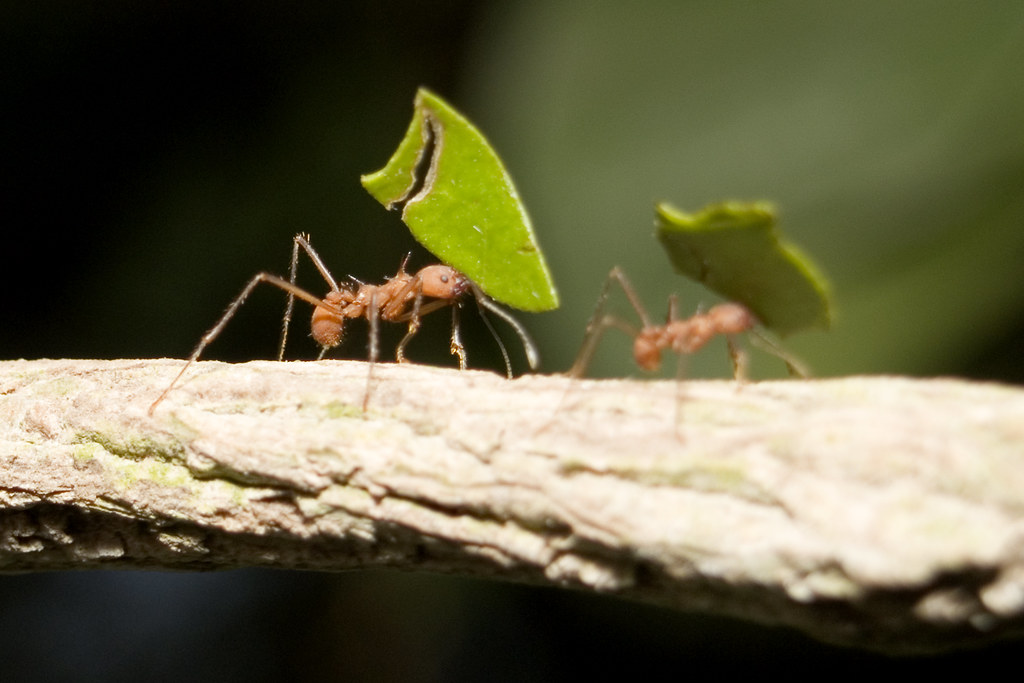
Flickr
Leafcutter ants (Atta and Acromyrmex) are remarkable insects known for their sophisticated agricultural techniques. These ants cut leaves from plants and transport them back to their colonies, where they use the leaves to cultivate fungal gardens. The fungi serve as their primary food source, creating a mutualistic relationship that has evolved over millions of years. This remarkable symbiosis between ants and fungi is a testament to the power of cooperative evolution. The ants themselves exhibit highly organized social structures with a complex division of labor. Worker ants, for example, focus on cutting leaves, while others care for the fungus or defend the colony. The intricate organization within their colonies has earned them comparisons to human societies, providing insights into the evolution of social behavior and ecosystem engineering. The leafcutter ants’ ability to create and maintain these fungal gardens demonstrates how cooperation and division of labor can shape the survival strategies of species. Their unique way of farming and mutual support has long fascinated researchers studying both the evolution of symbiosis and the complexities of social organisms.
11. Coelacanth: The Lazarus Fish
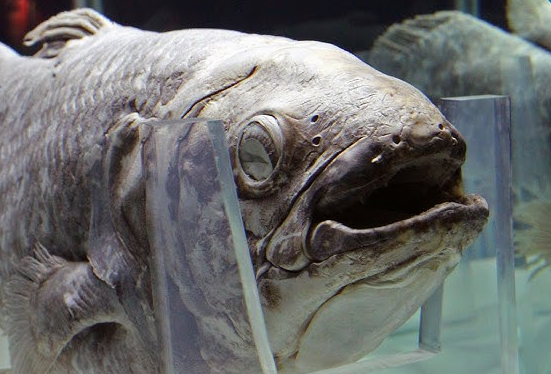
YouTube
The coelacanth (Latimeria) is an ancient fish that was thought to have gone extinct 66 million years ago, making its rediscovery off the coast of South Africa in 1938 one of the most astounding events in evolutionary biology. Often referred to as a “living fossil,” the coelacanth features distinct, limb-like fins that resemble the early stages of vertebrates transitioning from water to land. These unique fins, along with its jointed skull, offer critical insights into the evolutionary steps that led to the rise of tetrapods—four-limbed vertebrates that eventually gave rise to amphibians, reptiles, birds, and mammals. The coelacanth’s genome has proven to be an invaluable resource for scientists, providing a rare glimpse into the genetic changes that occurred during this pivotal moment in evolutionary history. The fish’s survival through millions of years without significant change also raises fascinating questions about evolutionary stasis and adaptation. Its rediscovery remains one of the most important scientific breakthroughs of the 20th century, cementing the coelacanth as a key piece in understanding the deep history of vertebrate evolution.
12. Electric Eel: Nature’s Battery
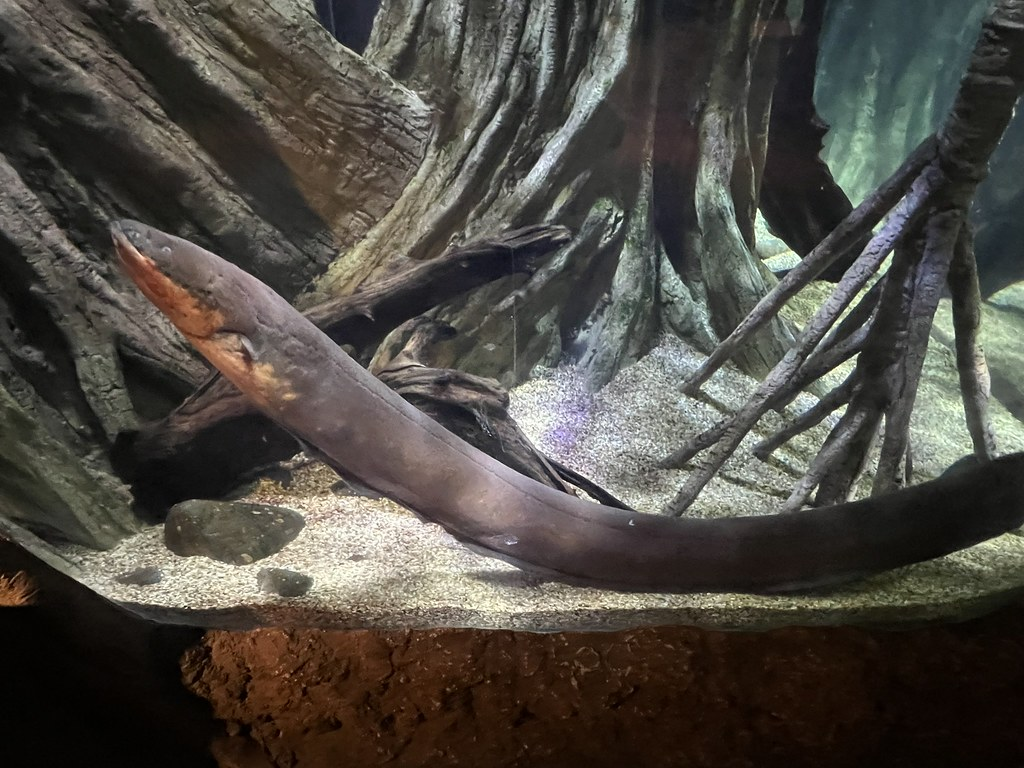
Flickr
The electric eel (Electrophorus electricus) is an extraordinary fish capable of generating powerful electricity to hunt, navigate, and protect itself. Native to the murky waters of the Amazon, it uses specialized cells known as electrocytes to generate electrical charges of up to 860 volts—enough to stun prey or ward off potential threats. These electric discharges are not only used for hunting and defense but also help the eel navigate its environment, as it can sense electric fields and detect objects in its surroundings through a process called electroreception. The electric eel’s ability to produce and sense electricity has inspired advances in bioelectricity research and has even influenced the development of robotic technologies that mimic these biological systems. Its unique adaptations highlight how evolution can lead to the development of specialized traits that enable survival in particular environments, making the electric eel a fascinating example of nature’s ingenuity in the face of ecological challenges.
13. Platypus: A Mammal That Lays Eggs

Animalia
The platypus (Ornithorhynchus anatinus) is so unique that when it was first discovered by European naturalists, many believed it was a hoax. Native to Australia, this remarkable mammal combines characteristics of reptiles, birds, and mammals, defying conventional classifications. It lays eggs, a rare trait among mammals, and produces milk to nourish its young, but without the presence of nipples. Instead, the milk is secreted through the skin. The platypus also has the ability to hunt underwater using electrolocation, sensing the electrical signals emitted by its prey. Male platypuses further enhance their oddity with venomous spurs on their hind legs, used in territorial disputes. The platypus’s genome has provided scientists with crucial insights into the evolutionary connections between mammals, reptiles, and birds, shedding light on the early stages of mammalian evolution. Its strange combination of traits highlights how evolution can take diverse paths, particularly in isolated ecosystems like Australia, where unique environmental pressures have shaped such a fascinating creature. The platypus remains a living testament to the endless possibilities of evolutionary adaptation.
14. Star-Nosed Mole: The Super-Sensing Mammal
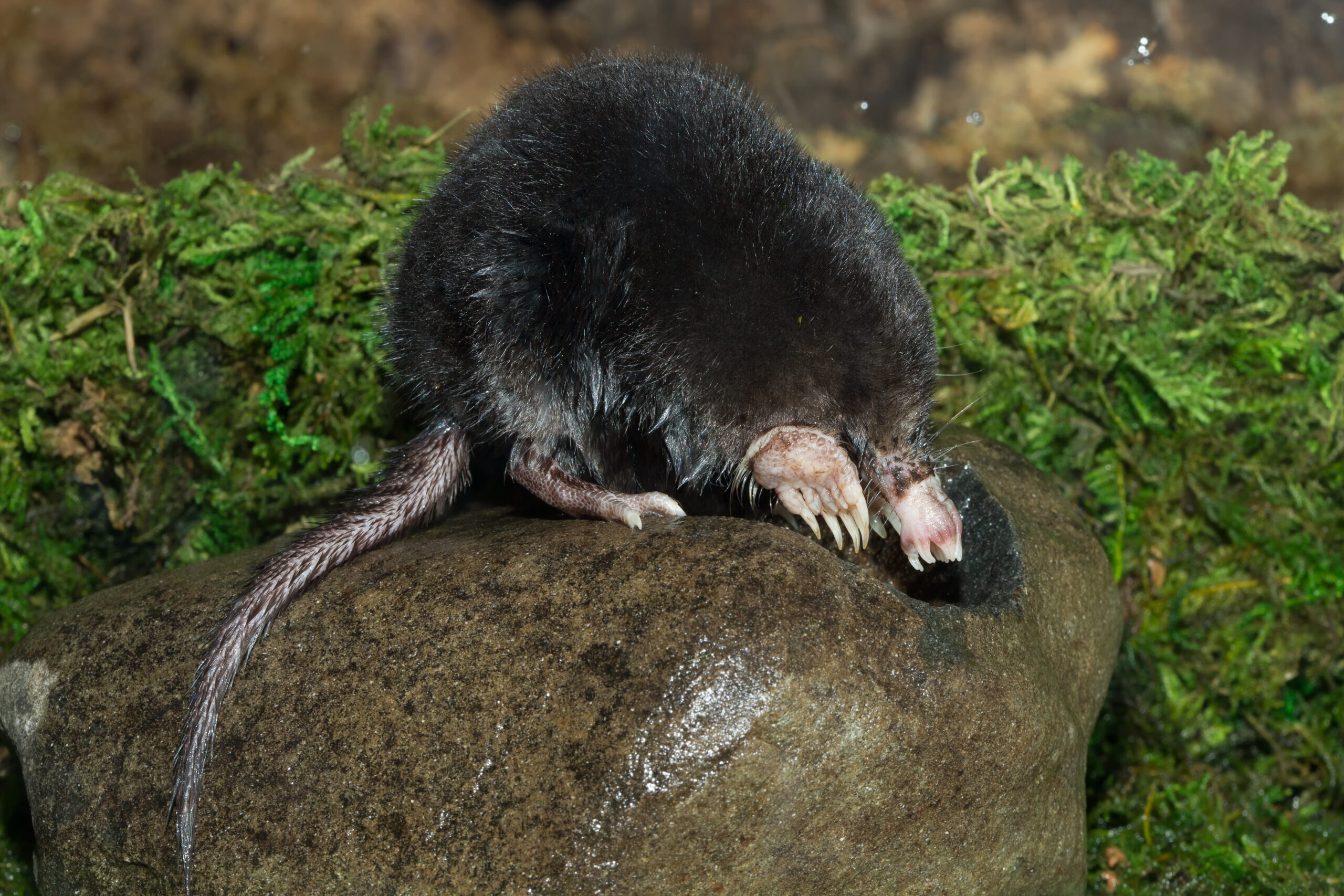
Flickr
The star-nosed mole (Condylura cristata) is one of nature’s most extraordinary creatures, instantly recognizable by the 22 fleshy, star-like appendages on its nose. Each of these appendages is packed with sensory receptors, giving the mole an unparalleled ability to detect and process information from its environment. This unique adaptation allows it to hunt with astonishing speed, capturing and consuming prey at a rate of up to 12 items per second. Found in wetlands across North America, the star-nosed mole thrives in moist, dark environments, where it relies on its highly sensitive nose to navigate and forage. Remarkably, it is also one of the few mammals that can “smell” underwater by exhaling air bubbles, which then trap scents from its surroundings. This ability to detect odors underwater gives the mole a distinct advantage in its aquatic habitat. The star-nosed mole’s extraordinary sensory abilities are helping scientists explore the evolution of tactile and neural systems, providing valuable insights into how specialized traits evolve to meet the challenges of specific environments. This unusual mammal is a fascinating example of how evolution can fine-tune organisms to thrive in the most specialized niches.
15. Saiga Antelope: The Alien Mammal
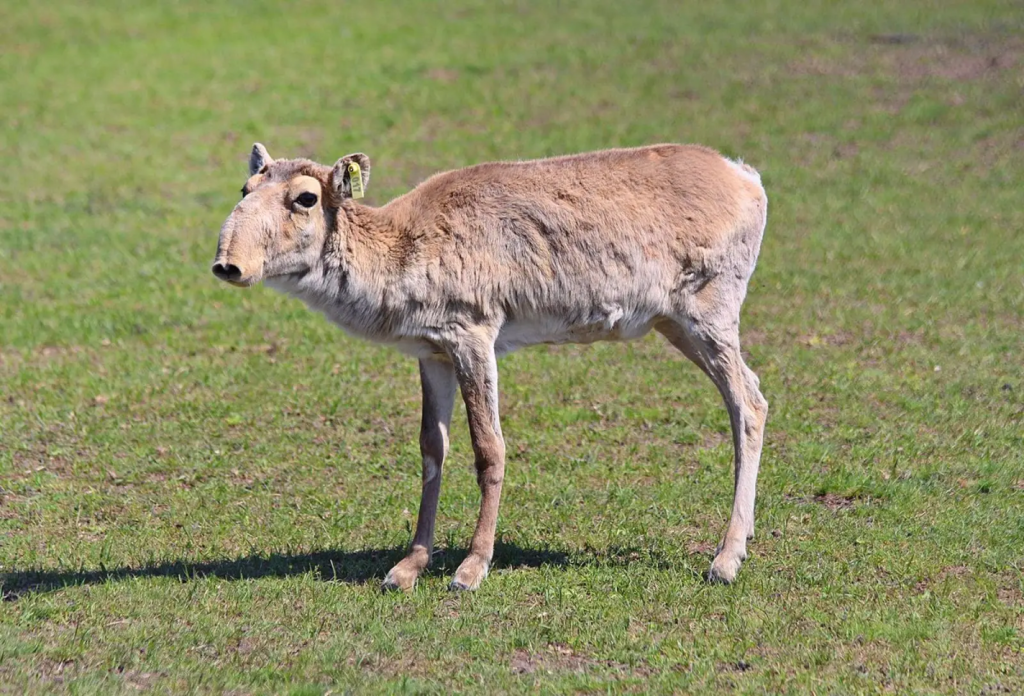
Animalia
The saiga antelope (Saiga tatarica) is an extraordinary species known for its unique, bulbous nose, which serves multiple vital functions. This large, flexible nose is not just an unusual feature—it’s a key adaptation that helps the saiga survive in its harsh Central Asian habitat. In summer, the nose filters out dust and cools the animal’s air intake, while in winter, it warms the cold air before it enters the lungs. This evolutionary design has allowed the saiga to endure extreme climate fluctuations over millennia. However, despite its remarkable adaptations, the saiga is now critically endangered, primarily due to poaching for its horns and habitat loss from human encroachment. Once abundant in the Eurasian steppes, the saiga population has plummeted in recent decades, making it a poignant symbol of conservation challenges. The saiga’s survival story underscores the delicate balance between evolutionary resilience and the pressures of human activity on the environment. Protecting this unique antelope is a reminder of the fragile nature of many species that have evolved to thrive in specific ecosystems but now face unprecedented threats.


